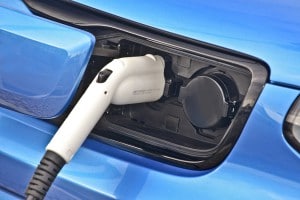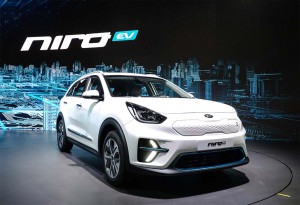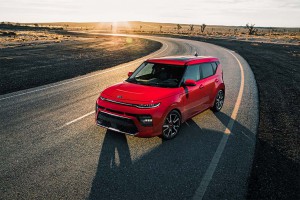Kia got into the electric vehicle market in a big way with the Niro model, but that long-range battery car will soon have plenty of company, the automaker’s president announcing plans to have fully 11 EVs in the Korean company’s line-up by 2025.
The announcement of plans to become a “pioneer in the age of EVs” comes just two weeks after officials with Kia’s parent, the Hyundai Motor Group, revealed plans to invest $87 billion in battery-electric vehicles, or BEVs, by mid-decade. That would fund development of 23 different models to be sold under the Hyundai, Kia and Genesis brands.
On the Kia side, the smaller of the two main Korean brands said this week that it wants to be “leading the popularization of electric vehicles,” part of what it calls “Plan S.”
(Kia offers closest look yet at new Optima – but will it get a new name?)
As with the parent company, Kia is shifting focus from being a metal-bending car manufacturer into one focusing on broader mobility services – though there is no indication it will take a cue from Hyundai and develop a flying taxi. Hyundai revealed the S-A!, a prototype passenger drone, at the Consumer Electronics Show earlier this month that it plans to provide for the planned Uber Elevate service.
“Kia Motors will transform itself into a ceaselessly innovative brand by accelerating its bold and preemptive transition to future businesses,” said President Han-woo Park Thursday. “Plan S is a bold and enterprising roadmap for Kia’s future business transition, buttressed by the two pillars of electric vehicles and mobility solutions. Our approach is to put customers first, and Kia will reinvigorate its brand innovation by developing products and services that offer new experiences for customers.”
On the electric vehicle side, Kia now offers two models, the Niro, which delivers an EPA-estimated 239 miles per charge, and the Soul EV. The latter model currently delivers a mere 111-mile range but will more than double that when a second-generation Soul reaches U.S. showrooms later this year.
Like many competitors, Kia has treated its two EVs as “compliance cars,” a term used for products primarily intended to comply with the strict emissions guidelines enacted by the California Air Resources Board. As a result, the two models are available only in a baker’s dozen states that follow those CARB mandates including California. That has limited demand, the brand selling a total of just 2,000 all-electric vehicles in the United States last year.
Going forward, however, Kia is looking to take BEVs into the mainstream. It is betting that EVs will make up fully 20% of its sales in key markets by 2025.
(Kia’s Korean K5 previews U.S. market’s 2021 Optima sedan)
With emissions and fuel economy standards tightening worldwide, virtually all automakers are developing electrification strategies – and they can vary widely. Some are focusing on unique platforms designed solely for all-electric drivelines. Others are working up more flexible architectures that can handle anything from gas and diesel engines to hybrids to all-electric propulsion. Kia’s strategy appears to be focused on delivering a mix of both.
One of the key challenges, Kia has said in recent years, was finding a stable and large enough supply of lithium-ion batteries to support a mainstream EV program – a concern raised by more than a few of its competitors. There has been a rapid expansion of battery manufacturing capacity worldwide, however, with new plants going up around the world. General Motors, for example, just identified the location near Lordstown, Ohio, where it will build a battery plant in partnership with Korea’s LG Chem.

Currently, Kia offers its EV models in only about a dozen U.S. states. But its aggressive plans will mean going nationwide.
Kia’s president was a bit vague with details about Plan S. Among other things, it is unclear where hydrogen vehicles will fit into things. Hyundai has been a big proponent of fuel-cell technology, in 2018 launching the latest model, the Nexo SUV. Kia is also working with the technology but to what degree has not been stated.
As with plans laid out by competitors, Kia’s EV announcement raises numerous questions. Easily the most important is where it will find customers for all the battery-cars it plans to build. In the U.S., sales of pure electric models rose a modest 1% in 2019. In China, the world’s largest market for plug-based vehicles, demand actually dipped last year, largely due to a cutback in government incentives. Sales in Europe were a mixed bag, depending on the market, but where demand was strong, such as Norway, subsidies also proved critical.
Several recent studies have suggested that potential buyers are becoming increasingly aware of the positives of battery-electric vehicles, concluding that, as prices decline, range increases and more and more products come to market, sales will begin to accelerate.
(New Seltos completes Kia’s sport-utility line-up)
Considering the hefty investment Kia and parent Hyundai have planned, they have to hope that scenario plays out.


